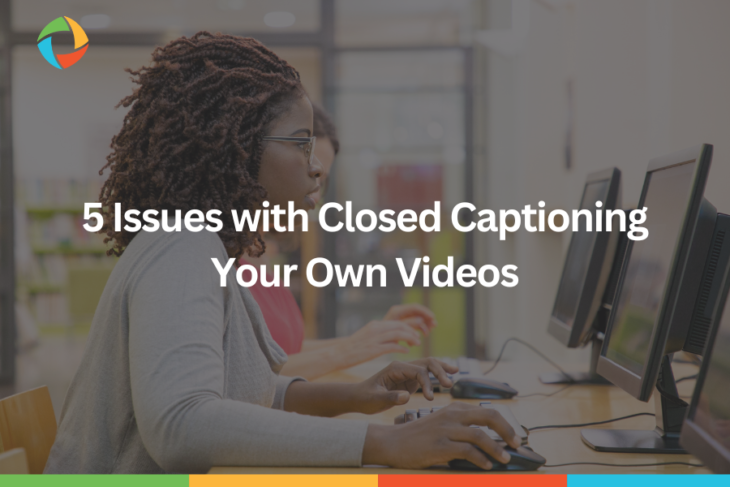Closed captioning is a great way to make videos more accessible to viewers who are hard of hearing or deaf.
Unfortunately, it can often be tricky to implement with your own videos, and there are plenty of issues that you may encounter.
This article covers five common issues with captioning your own videos, helping you prepare for the task.
Issue 1: Finding the Time to Close Caption Your Videos
Closed captioning is a very time-consuming process and it is often difficult to find time to do it in your own schedule.
Adding captions takes time, as you need to watch the video while creating them. This process can take significantly longer than the actual captioning itself.
Breaking the video into smaller parts allows you to work on it in more manageable chunks. However, completing the job still takes a lot of time.
Issue 2: Difficulty Reading Audio
Closed captioning requires transcribing all the audio in the video. This can be quite challenging if there’s a lot of background noise or the speaker has a thick accent.
Transcribing audio perfectly takes a long time because you have to listen to it multiple times to get it right.
It’s also difficult to put in all the nuances of the speech, like changes in tone and volume.
Issue 3: Accuracy of Closed Captioning
Accuracy is crucial in closed captioning because errors in the captions can confuse viewers. These mistakes make it harder for them to understand the content.
You also have to make sure that the captions match the timing of the audio, so they don’t get out of sync. This can be very tricky, as it requires a lot of concentration and attention to detail.
Issue 4: Formatting the Closed Captions
Once you have transcribed the audio, you need to format the captions correctly so they appear correctly on the video.
This includes things like setting the font size, font color, the background color and text alignment. This can be a very tedious task, and it takes a lot of time to get it right.
Issue 5: Making the Closed Captions Accessible
Finally, when creating captions for your own videos, it is important to make sure they are accessible to all viewers. This includes those who are hard of hearing or deaf.
Take extra steps to format the captions properly and include all necessary information.
For example, it is important to add sound effects and music and indicate when a speaker changes. You should also use correct punctuation and formatting, contrasting colors for text and background, and ensure the font size is large enough to be easily readable.
Include an access statement at the beginning of the video to inform viewers that it has captions. Also, provide instructions for enabling them.
Doing this will guarantee that everyone can enjoy your video, no matter their level of hearing.
A lack of accessibility can lead to a decrease in viewership, as viewers with disabilities may not be able to access the content.
Even in countries with no legal repercussions, it is still important to make sure your content is accessible to ensure everyone can enjoy your video.

Jake Drown
Jake is our Vice President and oversees our day-to-day operations. Jake thrives on solving our customer’s problems - if you’re stuck at a roadblock, he’s the one you need to call. As a jack-of-all-trades, you never know what you will find Jake doing on the weekends! He and his family are seasoned travelers and can be found anywhere from a mountain top, a forest, a beach, or even a corn field!


